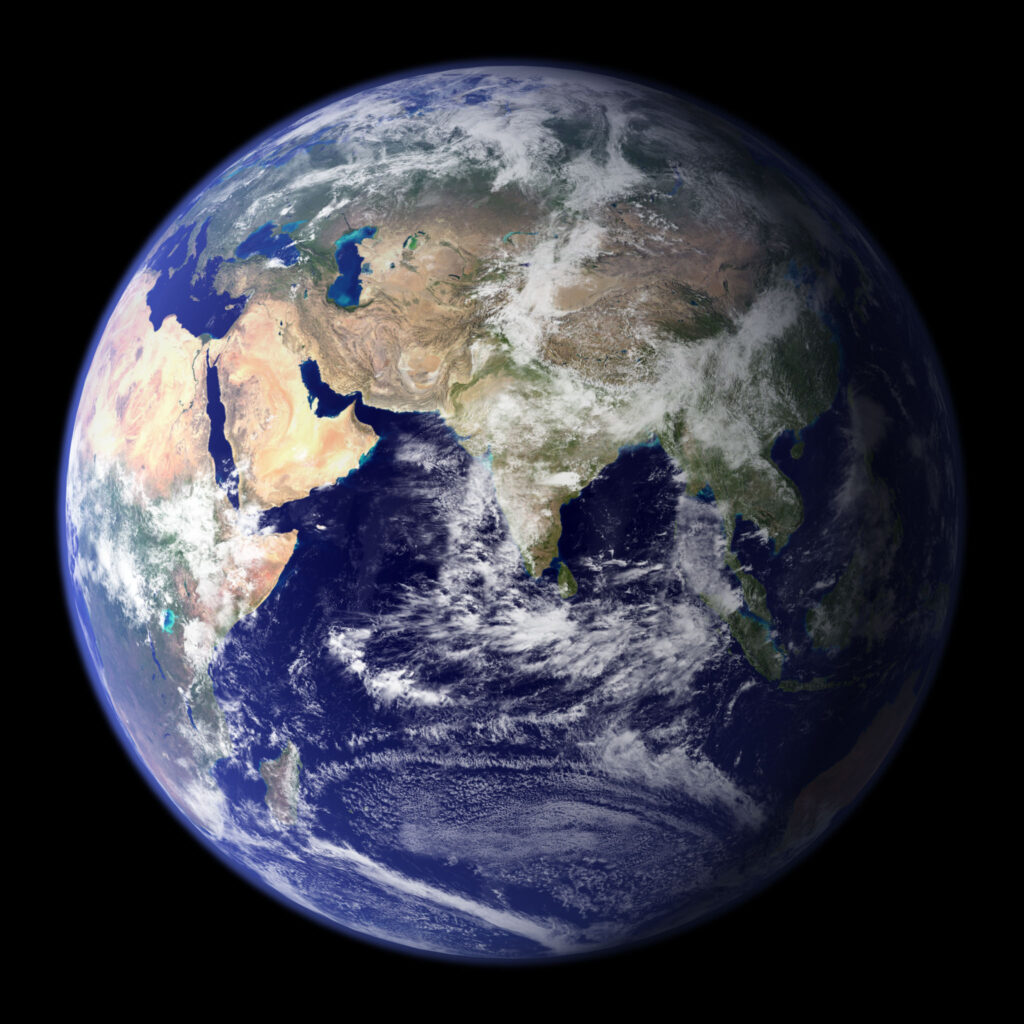Earth

The six main regions of Earth are (from inside to outside) a central metallic core, which is surrounded by a thick rocky mantle and topped with a thin crust .
The liquid oceans on our planet’s surface make up the hydrosphere.
Above the surface is the atmosphere, which is composed primarily of nitrogen and oxygen. Higher still lies the magnetosphere, where charged particles from the Sun are trapped by Earth’s magnetic field.
Earth’s atmosphere, composed primarily of nitrogen (78 percent), oxygen (21 percent), argon (0.9 percent), and carbon dioxide (0.03 percent), thins rapidly with altitude.
Convection is the process by which heat is moved from one place to another by the upwelling or downwelling of a fluid, such as air or water. Convection occurs in the troposphere, the lowest region of Earth’s atmosphere. It is the cause of surface winds and weather.
Above the troposphere, in the mesosphere and stratosphere the air is calm. Straddling the stratosphere and mesosphere is the ozone layer, where incoming solar ultraviolet radiation is absorbed.
At even higher altitudes is the ionosphere, where the atmosphere is kept ionized by high-energy radiation and particles from the Sun.
The greenhouse effect is the absorption and trapping by atmospheric gases (primarily carbon dioxide and water vapor) of infrared radiation emitted by Earth’s surface. Incoming visible light from the Sun is not significantly absorbed by these gases. By making it more difficult for Earth to radiate its energy back into space, the greenhouse effect makes our planet’s surface some 40 K warmer than would otherwise be the case.
The air we breathe is not Earth’s original atmosphere. It originated in material that was out-gassed from our planet’s interior by volcanoes and was then altered by solar radiation and, finally, by the emergence of life.